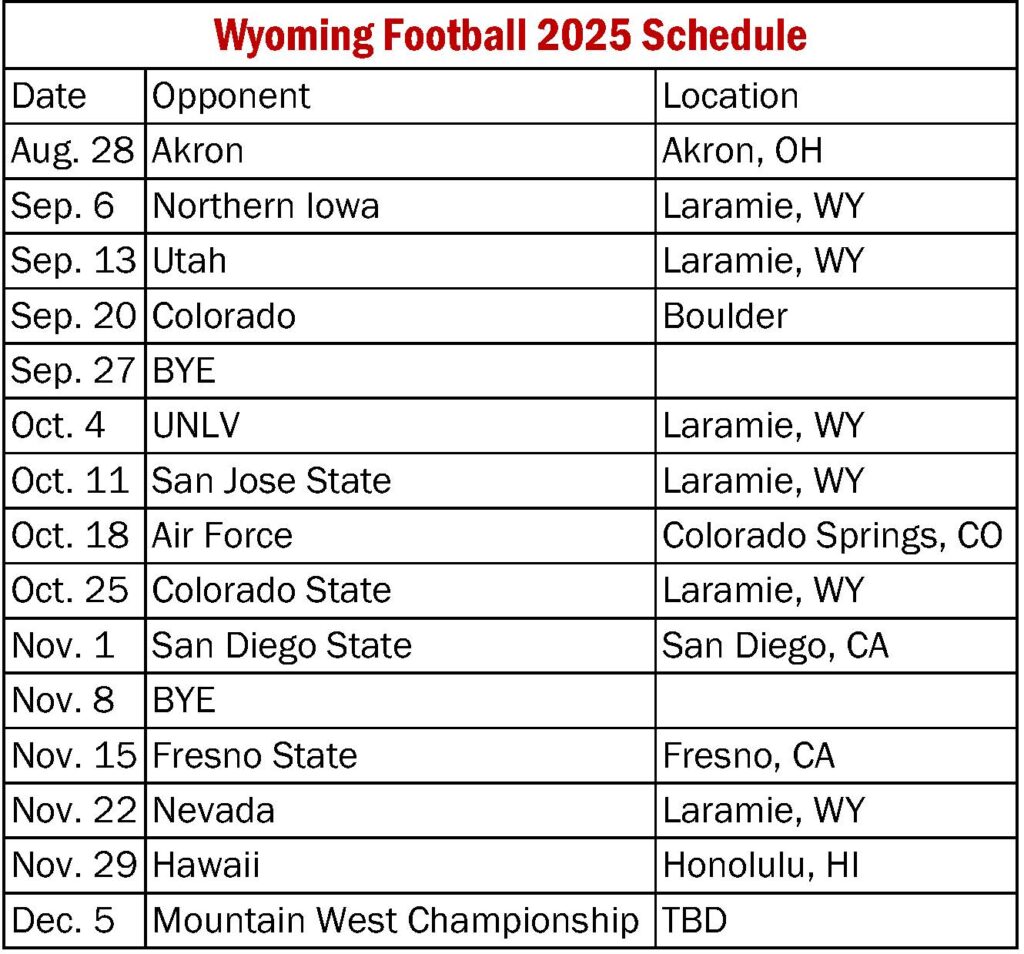Blog Article
Wyoming Football 2025 Season Preview: Jay Sawvel’s Critical Second Year
Jay Sawvel inherited something both precious and dangerous when he took over Wyoming football.
The 33rd head coach in program history faces a paradox that would terrify most coaches: he must honor a decade of unprecedented stability while proving he can exceed the modest ceiling that same stability created. His hot seat rating of 0.531 after just one season reveals an uncomfortable truth about coaching transitions at programs caught between respectability and relevance.
The fear isn’t just about wins and losses. It’s about determining whether Wyoming’s defensive identity under Sawvel, as coordinator, was the foundation of success or merely a byproduct of Craig Bohl’s comprehensive system. Now, with a 3-9 inaugural season behind him and mounting pressure to validate Athletic Director Tom Burman’s internal promotion, Sawvel faces the existential coaching question: was he promoted because he was the best candidate, or because he was the safest one?
When Defense Couldn’t Save the Day
Sawvel’s first season exposed the fragility of Wyoming’s recent success.
The Cowboys’ 3-9 record (2-5 Mountain West) represented their worst performance since the pre-Bohl era. The numbers tell a story of systematic offensive failure that undermined four years of defensive development:
- Offensive output: Just 19.3 points and 327.3 yards per game
- Passing attack: 52.2% completion rate, 189.4 yards per game, 0.9 passing touchdowns per contest
- Quarterback instability: Evan Svoboda managed 5 touchdowns against 8 interceptions before giving way to Kaden Anderson
- Close game struggles: 2-7 record in contests decided by eight points or fewer
The defensive side, Sawvel’s supposed area of expertise, allowed 410.6 yards per game. While not catastrophic, it represented significant regression from the units that helped define Wyoming football under Bohl. The Cowboys surrendered 218.9 passing yards and 191.7 rushing yards per game, failing to force the game-changing turnovers that had become their trademark.
Seven of their nine losses came by margins that indicated competitive capability undermined by crucial mistakes.
The Statistical Split That Reveals Everything
Here’s what makes Wyoming’s 2024 season so maddening: when they were good, they were really good.
In victories, the Cowboys averaged 39.7 points and 435 total yards per game. This 20-point differential between wins and losses exposed the binary nature of Sawvel’s first season. When things worked, they worked spectacularly. Consistency remained elusive.
The three wins showcased different versions of competitive football:
- Air Force (31-19): Defensive dominance
- New Mexico (49-45): Offensive explosiveness
- Washington State (15-14): Clutch execution
Yet the Cowboys couldn’t string together this level of performance across twelve games.
Special teams provided unexpected stability amid the chaos. Kicker John Hoyland converted all 25 extra points and 15 of 19 field goals, while punter Jack Culbreath averaged 40.4 yards per punt. However, all three specialists graduated, creating another area of uncertainty for 2025.
Addition Through Subtraction: The 2025 Roster Mathematics
Wyoming’s outlook hinges on whether losing its defensive leaders can somehow improve the team.
The graduation of linebacker Shae Suiaunoa (88 tackles, 10 TFL), safety Connor Shay (76 tackles), and defensive back Wrook Brown (48 tackles, 3 interceptions) removes the defensive spine that helped define recent Wyoming teams. This isn’t just about losing tackles. It’s about losing the voices that made defensive adjustments and kept younger players focused.
Yet the offensive foundation offers genuine optimism:
- Quarterback Kaden Anderson: Returns as a sophomore after a 58.3% completion rate, 955 yards, 6:3 TD: INT ratio in nine games
- Running back Sam Scott: Led team with 435 yards (4.7 average) in 10 games, returns for senior season
- Receiver Jaylen Sargent: Team leader with 480 yards and 2 TDs, brings senior experience
- Tight end John Michael Gyllenborg: 425 yards and 3 TDs, provides reliable target
The 2025 roster reveals strategic depth additions, particularly at positions that struggled in 2024. Multiple underclassmen at quarterback, running back, and wide receiver suggest increased competition and developmental potential.
The question remains whether this depth translates to on-field improvement or merely organizational depth.
The Schedule Gauntlet: Where Championships Are Won or Lost
Wyoming’s 2025 schedule will define Sawvel’s coaching identity in the first month.
The non-conference slate begins with road trips to Akron and Colorado, sandwiched around home games against Northern Iowa and Utah. This early-season stretch will likely determine whether Sawvel gets a third year or finds himself updating his resume.
The Utah Test
The Utah home game on September 13 represents everything. The Utes’ recent success makes this a measuring-stick game that could provide early validation or expose continued deficiencies. A competitive showing against Utah suggests Sawvel’s system is taking hold. A blowout loss raises questions about year-two development that won’t go away.
Conference play offers more realistic win opportunities:
- Home games: UNLV, San Jose State, Colorado State, Nevada
- Challenging road trips: San Diego State, Fresno State, Hawaii
The travel demands have historically tested Wyoming’s depth and conditioning, making every road game a potential trap.

The Philosophy Under Fire
Sawvel’s coaching philosophy centers on playing “harder, faster, smarter, and longer than our opponent.”
This approach worked when applied specifically to defense. Translating it to comprehensive program leadership represents his greatest challenge. The 0.531 hot seat rating suggests external observers remain skeptical about his ability to implement system-wide change.
The promotion of Aaron Bohl to defensive coordinator represents both continuity and risk. While Bohl’s four-year tenure as linebackers coach provides institutional knowledge, his lack of coordinator experience creates another variable in an already uncertain equation.
Sawvel’s ability to delegate defensive responsibilities while focusing on offensive development will determine whether Wyoming can effectively balance both phases.
The Defensive Coordinator Syndrome
Here’s the deeper concern surrounding Sawvel’s tenure: successful coordinators often struggle with the comprehensive demands of head coaching.
The Cowboys’ offensive struggles suggest Sawvel may have over-compensated in trying to maintain defensive standards while developing offensive competence. This split focus often leads to mediocrity in both phases, exactly what Wyoming cannot afford, given its resource limitations and competitive disadvantages.
Wyoming fans have been conditioned to expect defensive competence as a baseline. The fear is that Sawvel’s attempts to modernize the offense could undermine the defensive foundation that made Wyoming competitive during the Bohl era.
This balancing act becomes even more challenging when facing the immediate pressure of hot-seat speculation after just one season.
Hot Seat Mathematics: The Year Two Reality
A 0.531 hot seat rating after one season places Sawvel in precarious territory.
While Athletic Director Tom Burman typically doesn’t place first-year coaches on hot seat status, Sawvel’s rating suggests performance expectations that transcend normal grace periods. The mathematical reality is stark: significant improvement in year two isn’t just preferred, it’s essential.
Wyoming’s recent history suggests 6-7 wins represent the minimum threshold for continued confidence. Anything less than bowl eligibility would likely push Sawvel’s rating into genuinely dangerous territory, particularly if offensive struggles persist.
However, the counter-argument remains compelling:
- Sawvel inherited a program transitioning from a beloved, long-tenured coach
- The 2024 season could represent growing pains rather than fundamental incompetence
- His defensive pedigree and institutional knowledge provide advantages external hires often lack
The 2025 Projection: Breakthrough or Breakdown?
Wyoming’s season will hinge on three critical factors.
Quarterback development: Anderson’s continued growth could unlock the offensive potential glimpsed in 2024’s victories. If he stagnates or regresses, the season could unravel quickly.
Defensive leadership emergence: Young defensive players must replace graduated leadership without sacrificing competitive intensity. This transition often takes a full season to solidify.
Special teams competence: New specialists must maintain the field position advantages that kept Wyoming competitive in close games. Poor special-teams play could turn close losses into blowouts.
The schedule provides realistic opportunities for 5-7 wins, which would represent meaningful progress while potentially falling short of bowl eligibility. However, this marginal improvement might not satisfy hot-seat concerns, particularly if losses continue to come in winnable games.
Sawvel’s coaching future depends on proving that Wyoming’s defensive identity can coexist with offensive competence.
The 2024 season showed flashes of this potential, but consistency remains the ultimate challenge. Whether he can synthesize these elements into sustained success will determine not only his job security but also Wyoming’s competitive trajectory in an increasingly challenging Mountain West landscape.
For a program caught between past success and future aspirations, the stakes couldn’t be higher.
